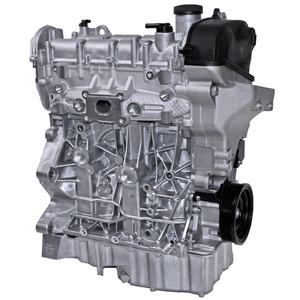Opel Corsa Engine: Top Tips for Upkeep and Care
Opel Corsa Engine: Top Tips for Upkeep and Care
Blog Article
Exploring the Inner Operation of a Compact Vehicle's Engine System
As chauffeurs, we usually take for granted the elaborate processes that happen within the boundaries of our car's engine system. The compact yet complex machinery that thrusts us onward is a marvel of engineering precision and coordination. From the controlled explosions in the burning chamber to the precise timing of gas injection, every part plays an important duty in the smooth procedure of the engine. In this exploration of a compact automobile's engine system, we will unwind the internal workings of this mechanical harmony, clarifying the secrets that drive us ahead on our daily trips.
Burning Process Summary
The burning process in a portable car's engine system is a vital mechanism that efficiently transforms gas into energy to power the vehicle. This process takes place within the combustion chamber of the engine, where fuel and air mix, ignite, and create controlled surges. The burning procedure includes four main phases: consumption, exhaust, power, and compression.
During the intake stage, the piston moves downward, reeling in a blend of air and fuel right into the combustion chamber. The following stage, compression, entails the piston moving upwards, pressing the air-fuel mix to enhance its effectiveness. Subsequently, in the power stage, the ignition system ignites the pressed mix, resulting in a quick expansion of gases that requires the piston pull back. This downward motion generates the power needed to drive the lorry. Ultimately, in the exhaust phase, the scorched gases are eliminated from the combustion chamber through the exhaust shutoff, preparing the chamber for the following cycle. This cyclic burning procedure is fundamental to the procedure of a portable automobile's engine system, ensuring efficient power conversion for propulsion.
Piston and Cyndrical Tube Interaction

The piston's specific fit within the cylinder is important for keeping optimal compression and preventing power loss during burning. Tight clearances between the piston and cylinder walls guarantee efficient securing, permitting the piston to relocate smoothly without permitting gases to leak past. Correct lubrication is additionally important to reduce friction and wear between these parts, enhancing long life and performance.
Moreover, the layout and materials made use of in manufacturing the piston and cyndrical tube influence engine efficiency and resilience. Modern engines commonly employ lightweight yet durable products like aluminum alloys for pistons and cyndrical tube linings Recommended Site to lower inertia and enhance thermal performance. On the whole, the unified communication between the piston and cylinder is fundamental to the engine's capability and total performance.
Gas Injection System Performance
Gas injection systems in small vehicle engines play an essential role in exactly delivering fuel to the combustion chamber for effective and regulated ignition. The fuel shot system functions by injecting gas into the burning chamber at the optimal moment throughout the engine's procedure (opel corsa engine). This specific timing makes certain that the fuel blends evenly with the air for proper burning, leading to boosted gas effectiveness and reduced exhausts
There are largely 2 sorts of fuel injection systems utilized in small vehicle engines: port gas shot (PFI) and straight fuel injection (DFI) PFI systems infuse fuel into the intake port prior to the intake shutoff, while DFI systems infuse gas directly right into the burning chamber. Both systems have their benefits, with DFI using far better gas atomization and PFI offering an go to this site extra cost-effective option.
Comprehending Engine Cooling Mechanisms
Effective operation of a portable vehicle's engine counts greatly on the effectiveness of its cooling devices. The air conditioning system in a compact automobile normally consists of numerous components functioning together to manage the engine temperature. Understanding these engine cooling devices is essential for preserving the efficiency and long life of a compact vehicle's engine system.

Exhaust System Parts Explained
The optimal functioning of a compact vehicle's engine cooling mechanisms depends on a complementary system known as the exhaust system, which consists of various essential components for ensuring effective discharges and engine performance. The exhaust manifold gathers exhaust gases from the engine's courses and cylinders them to the catalytic converter.
One critical element of the exhaust system is the oxygen sensor, which keeps an eye on the oxygen levels in the exhaust gases to help manage fuel usage and make sure optimal engine performance. opel corsa engine. Furthermore, the resonator may be existing in some exhaust systems to reduce sound degrees. Generally, the exhaust system plays a vital role in keeping engine efficiency, reducing harmful discharges, and making certain a quieter driving experience for compact automobile owners

Conclusion
To conclude, you can try here the portable vehicle's engine system is a complicated mix of elements that collaborate to promote the combustion process, convert fuel into energy, and expel waste gases. Understanding the internal functions of the engine system, including the piston and cyndrical tube interaction, fuel injection system, engine cooling systems, and exhaust system elements, is critical for keeping ideal efficiency and performance of the vehicle.
The combustion process in a small automobile's engine system is an essential mechanism that effectively converts fuel right into energy to power the car.Gas injection systems in compact lorry engines play an important duty in specifically delivering gas to the burning chamber for reliable and controlled ignition.There are largely two kinds of gas shot systems made use of in portable car engines: port gas injection (PFI) and direct fuel shot (DFI) Comprehending these engine cooling mechanisms is crucial for preserving the efficiency and durability of a portable car's engine system.
The ideal performance of a compact car's engine cooling systems depends on a complementary system recognized as the exhaust system, which comprises numerous important parts for making certain effective exhausts and engine performance.
Report this page